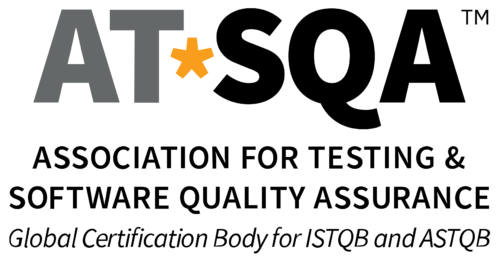
Key Takeaways
- Regression testing is vital for ensuring that new code changes do not adversely affect the existing functionality of the software, particularly within agile development cycles that require rapid iterations without compromising quality.
- Automated regression testing strategies improve testing efficiency and software quality, though they need to be complemented with manual efforts for exploratory and user experience testing, with tool selection being crucial for success.
- A robust regression test suite is essential and requires regular updates to test cases and test data management practices, with obsolete tests being periodically eliminated to maintain relevance and efficiency.
Diving Into Regression Testing: What It Is and Why It Matters
Regression testing is a software testing technique performed after code modifications to ensure that the existing functionalities still work as expected. The primary role of regression testing is to ensure that new code changes do not negatively impact the software quality or introduce regressions. It serves as a periodic health check-up for your software, ensuring that the new code integrates well with the existing system.
Unlike functional testing, which checks the correctness of individual features, regression testing ensures that enhancements or fixes do not harm existing system behavior. Therefore, it plays a critical role in maintaining the software’s stability and quality, while functional tests focus on specific functionalities.
The Fundamentals of Regression Tests
At its core, regression testing is designed to:
- Check for unintended impacts of changes on existing functionality
- Distinguish it from retesting, which aims at confirming bug fixes
- Focus on identifying new, unknown bugs that may arise due to recent code changes
- Ensure that previously functional code remains operational even after new features or code alterations are introduced
Therefore, it is a vital cog in the software testing machine.
The Significance of Regression Testing in Agile
In the realm of Agile methodologies, regression testing is the key that maintains the stability and sustainability of existing features while introducing new developments. It enables developers to:
- Uncover and mitigate unexpected risks in software builds effectively within the Agile framework
- Align with the agile need for rapid yet stable iterations
- Ensure that new code changes do not impact existing functionalities
Regression testing plays a crucial role in ensuring the success of Agile development by providing a safety net for software changes.
In essence, agile regression testing is essential for catching bugs as close to their introduction as possible, ideal for continuous and evolving development cycles.
Crafting Your Automated Regression Testing Strategy
Crafting an automated regression testing strategy requires careful thought and strategic planning. Automated regression testing offers several benefits, including:
- Saving time and enhancing efficiency by executing many test cases quickly and repeatedly without additional costs
- Ensuring higher accuracy and comprehensive coverage, examining even minor changes meticulously
- Maintaining the quality of existing functionalities
By implementing an automated regression testing strategy, you can improve the overall quality of your software and streamline your testing process.
While automated regression testing provides efficiency in repetitive tasks, human cognitive skills are essential for specific testing types, such as exploratory and UX testing, which may still require manual efforts. Therefore, an effective automated regression testing strategy is based on clear success factors, continuous quality reviews, up-to-date test cases, and a structured approach to prioritization and impact analysis.
Deciding When to Automate Tests
The decision to automate tests is influenced by various factors. Automated testing is advisable when dealing with repetitive manual testing on large software applications or those with extensive dataset coverage and when the number of manual regression tests becomes too large to manage efficiently. Considering the return on investment when comparing manual efforts versus the automation cost is crucial in making strategic decisions about test automation.
Automated regression testing can produce faster results than manual testing, leading to a quicker release process. Regular automated test runs enhance the robustness of a regression testing strategy and can be scheduled:
- daily
- weekly
- monthly
- as needed
depending on the project’s needs.
Selecting the Right Automated Testing Tools
The selection of the right automated testing tools is a critical step in crafting an effective regression testing strategy. It is essential to clarify the required features and functionality of the regression testing tool to solve the specific problem at hand. Evaluating who will use the tool and the necessary number of licenses helps ensure it meets organizational usage needs.
Customer reviews and feedback can provide real-world insights into the performance and reliability of regression testing tools. Thus, careful evaluation and comparison of various software specs can help make an informed decision among various regression testing tools.
Performing Regression Testing Like a Pro
Performing regression testing like a pro involves several key steps. To perform regression testing effectively, a solid strategy outlines the steps to identify changes, prioritize identified changes and product requirements, select and schedule test cases, and execute them effectively.
Identifying source code changes is a fundamental step in regression testing to determine which parts of the software are potentially affected by recent code commits. As the software and regression test suite evolve, the strategy should include provisions for managing the growing complexity to maintain testing efficiency.
Identifying Changes and Affected Areas
Identifying changes and affected areas is a crucial step in regression testing. Various events such as:
- the addition of new requirements
- introduction of new features
- defect fixes
- performance optimizations
- software version releases
- UI updates
- configuration changes
- integration of new third-party systems
trigger regression testing. Identifying code changes requires collaboration between development and testing teams to inform about new features or bug fixes and to pinpoint which areas of the application are impacted, thus guiding the targeted regression testing approach.
Selective and partial regression test selection strategies focus on specific areas affected by recent changes, reducing the efforts and resources needed compared to a full regression.
Prioritizing Regression Test Cases
Test case prioritization is an important aspect of regression testing. Test cases are ranked based on their importance and urgency, considering factors such as:
- Fault coverage capacity
- Execution time
- Severity of faults uncovered
- User participation
- Utility to the product
Based on their significance to the business requirements, previous test cycle experiences, functionality of existing features, and delivery timelines, test cases are categorized into high, medium, and low priority levels for testing.
In selective regression testing, priority is given to areas of main functionality, error-prone code segments, and complex user interactions, ensuring a thorough examination of the application’s most critical components.
Running Regression Tests and Analyzing Results
When running regression tests and analyzing results, it is essential to schedule and execute test cases independently to ensure the failure of one does not affect others. Parallel testing enables quick feedback by generating test results across various environments, browsers, devices, and operating systems.
Analyzing regression test results focuses on detecting regressions to improve quality and ensure customer satisfaction. Utilizing test suite optimization techniques helps reduce redundancy and maintain focus on impactful tests, thereby saving time and ensuring quality.
An automated regression testing framework should provide detailed execution reports that are valuable for analysis by both testers and managers.
Regression Testing Techniques Unveiled
There are several regression testing techniques that span from:
- Retesting everything
- Selecting specific tests
- Prioritizing test cases
- Applying a hybrid approach
Each technique is suited to different bug identification and resolution needs.
Test case prioritization for regression testing can be handled using techniques like Ant Colony Optimization, which considers the history of flaws, test execution time, and fault severity. Unit tests play a crucial role in regression testing, focusing on verifying the stability and quality of individual code segments while ensuring their proper function within the larger system.
Complete Regression Testing vs. Selective Regression Testing
Complete regression testing involves re-executing all test cases on the entire software when substantial updates are made to the application’s codebase, ensuring thorough coverage but requiring significant time and resources. On the other hand, selective regression testing involves testing specific parts of the application impacted by recent changes, reducing efforts and resources needed compared to a full regression.
The decision between complete and selective regression testing depends on factors like the size of the code change, resources available, and risk assessment of the software changes.
Progressive and Corrective Regression Testing Explained
Progressive regression testing ensures that existing functionalities are not disrupted by changes in software specifications or the addition of new features. When new components are integrated into a system, progressive regression testing requires the development of new testing environments or test cases to validate the interoperability with existing components.
On the other hand, corrective regression testing focuses on reusing existing test cases to verify that current features function as intended, specifically when there have been no changes to the source code.
Building and Maintaining Your Regression Test Suite
Building and maintaining a robust regression test suite involves several best practices. Establishing a baseline of expected behavior for existing functionalities can help in assessing the impact of code changes on the software’s behavior. Depending on project dynamics and goals, a regression testing suite can be designed for group-based testing or continuous testing.
Building a robust regression test suite includes best practices such as test isolation, version control, and managing test data effectively. Regular feedback from stakeholders and development teams contributes to refining the regression testing strategy and its effectiveness.
From Writing Test Scripts to Test Data Management
From writing test scripts to managing test data, there are several steps involved in building and maintaining a regression test suite. It’s crucial to segregate test data from scripts, facilitating their individual maintenance and enhancing overall test flexibility. Thorough documentation of test cases, procedures, and expected outcomes is key for consistent knowledge transfer across the test team.
Regular maintenance and management of business-specific test data are recommended to prevent corruption and streamline the testing process. Proper test data management is vital for accurately simulating scenarios that reflect real-world use in regression tests.
Handling Obsolete Test Cases
Handling obsolete test cases is a crucial aspect of maintaining a regression test suite. Updating test cases to reflect changes in the application is essential to ensure the regression test suite stays current and effective. A periodic review of the regression test suite helps identify obsolete or redundant tests resulting from application changes.
Evaluating test coverage periodically can expose gaps in the test suite and signal which obsolete tests need to be updated or removed. Part of test cycle management includes updating the suite with new cases and eliminating those that have become obsolete.
Leveraging Top Regression Testing Tools
In the modern era of software development, leveraging top regression testing tools can greatly enhance the efficiency of the testing process. Automated regression testing tools are crucial for verifying that software behaves as expected across various browsers, devices, and environments.
From the widely recognized tool Selenium, which uses artificial intelligence to perform regression tests across different platforms, to Cypress, which offers easy setup and real-time test execution, there is a multitude of tools available for effective regression testing. Some popular tools include:
- Selenium
- Cypress
- TestComplete
- Ranorex
- Appium
These tools provide various features and capabilities to help you automate your regression testing process.
Spotlight on Industry-Leading Testing Frameworks
There are several industry-leading testing frameworks that offer end-to-end AI-augmented automation testing. Katalon Platform is known for its comprehensive capabilities that facilitate both UI and API integration testing. Another noteworthy platform is Testsigma, which offers a modern cloud-based approach to regression testing, utilizing natural language processing (NLP) to simplify test creation, AI to adapt to changes in function and parallel test execution capabilities.
The adoption of AI and machine learning in regression testing, as seen in contemporary frameworks, leads to automated test suite generation and maintenance, thereby reducing manual workload and expediting the testing cycle.
Mobile App Testing Specializations
Specialized tools for mobile app testing are critical in today’s market due to the prevalence and diversity of mobile devices and operating systems. Platforms like the Katalon Platform, Appium, and Robot Framework provide automated regression testing capabilities for mobile applications, supporting multiple platforms and catering to the needs of diverse mobile testing scenarios.
For Android app testing, frameworks such as Espresso, Robotium, and Selendroid offer unit and black-box testing, automation with Java, and testing native and hybrid apps, respectively, with various levels of Selenium integration and CI/CD system support.
For iOS app testing, XCUI Test and iOS Driver provide UI testing and Selenium integration capabilities, with the former designed for deeply integrated tests within the Xcode IDE and the latter offering better performance on emulators.
Integrating Regression Testing into the Development Lifecycle
Integrating regression testing into the development lifecycle is a crucial aspect of maintaining software quality. Regression testing serves as a vital safeguard in agile development cycles to ensure that frequent updates do not disrupt existing functionalities.
To support continuous testing and delivery within fast-paced development cycles, regression testing tools need to be integrated with DevOps and Agile methodologies. Automated regression tests can be seamlessly integrated into Continuous Integration (CI) pipelines, providing immediate feedback on code changes to prevent regressions.
Balancing Speed and Quality in CI/CD Pipelines
In the world of continuous integration and continuous delivery (CI/CD), balancing speed and quality is a major challenge. Regression testing is critical in Agile and CI/CD as it aligns with continuous iteration and integration, preventing the accumulation of undetected broken code.
Automated regression testing, which includes running automated tests, can be seamlessly incorporated into CI/CD pipelines, triggering tests automatically after each code change to ensure continuous quality checks.
Collaboration Between Development Team and QA
Collaboration between the development team and Quality Assurance (QA) is a cornerstone of successful regression testing. Fostering a culture of collaboration between developers and QA professionals is crucial for delivering high-quality software.
Regular communication between development and QA teams is essential for timely adjustments to testing strategies in response to project evolution. Effective bug tracking during regression testing ensures prompt and effective resolution of issues found.
Summary
In conclusion, mastering regression testing is an essential skill for any software development team. It not only ensures the quality and stability of the software but also aids in efficient project execution. By understanding the different techniques, tools, and strategies involved in regression testing, one can effectively integrate it into the development lifecycle, ensuring that new code changes do not negatively impact the existing functionalities of the software.
Need Help with Your Regression Testing Strategy?
Most Popular
 |
A Quick Introduction To Jira
By: Jimmy Florent |
|
 |
Visual Regression Testing Market Challenges and Opportunities
By: Philip Lew |
|
 |
Agile Testing Solution Market Continues to Grow – What Are The Key Challenges?
By: Philip Lew |
|






Leave A Comment